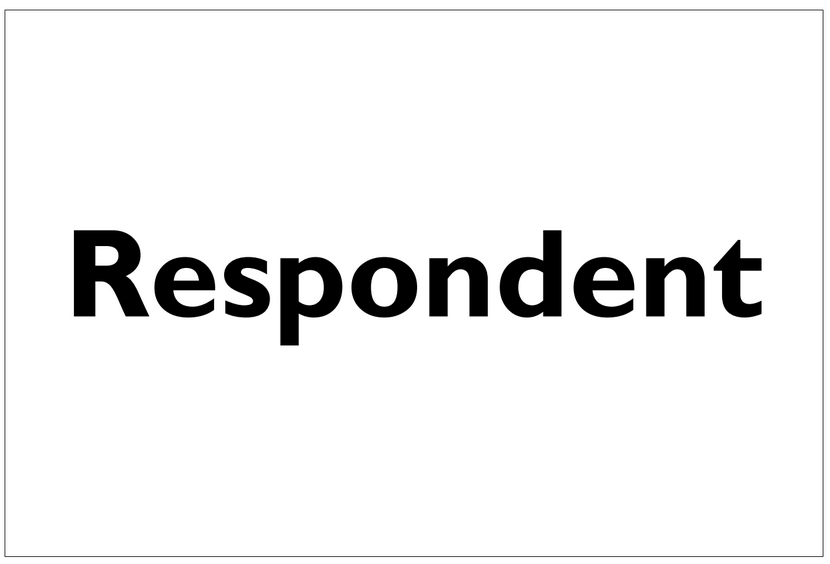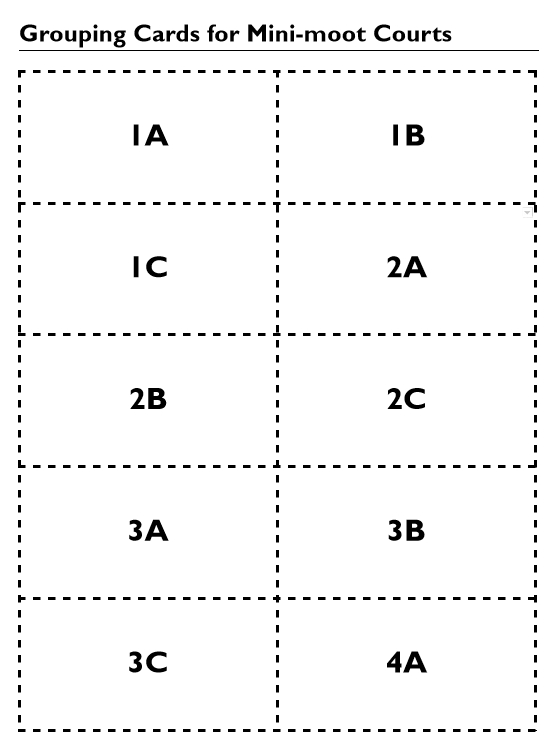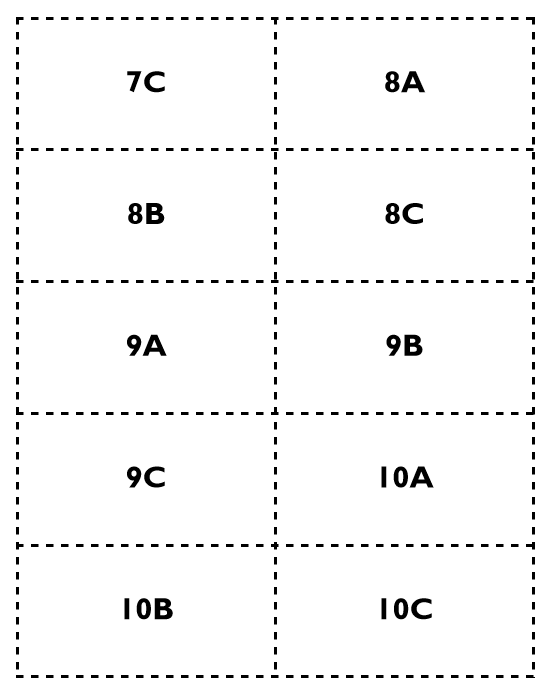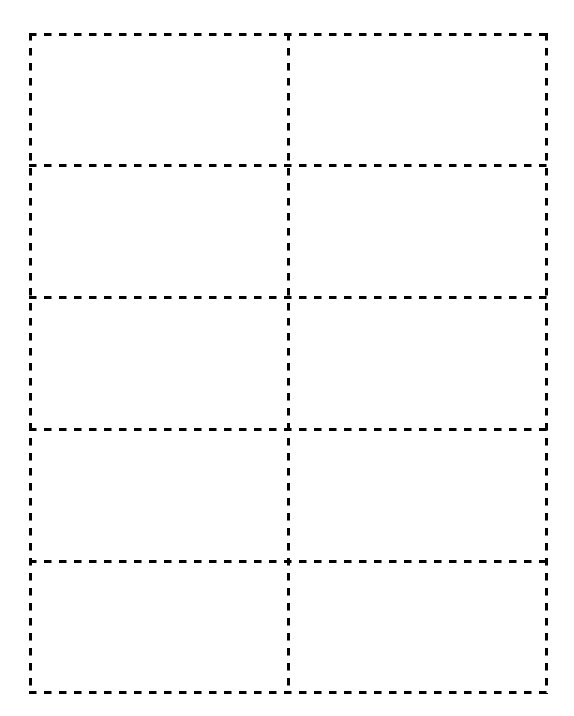7 Moot Court Lesson 10 Mini-moot Courts

A lesson by Street Law, Inc.
Moot Court Lesson 10
Mini-moot Courts
|
Overview |
Outcomes |
|
In this lesson students will prepare for and participate in a mini-moot court. Students will play the role of justice/judge, petitioner, or respondent. |
As a result of this lesson, students will be able to: 1. Role play an attorney or justice/judge involved in an appellate or Supreme Court case; 2. Analyze the facts and issues, construct arguments, and generate a decision in a case; and 3. Hone independent analysis, critical thinking, and decision-making skills. |
 90 minutes
90 minutes
1. Introduction (5 minutes)
2. Read, Review, and Clarify the Facts of the Case (20 minutes)
3. Discuss the Issue (5 minutes)
4. Assign Roles (5 minutes)
5. Prepare for Roles (30 minutes)
6. Mini-moot Courts (10 minutes)
7. Hand Down the Decision (5 minutes)
8. Summary and Debrief (10 minutes)
An Overview of Mini-Moot Courts
A moot court is a role-play of an appeals court or Supreme Court hearing. The court is asked to rule on a lower court’s decision. No witnesses are called, nor are the basic facts in a case disputed. Arguments are prepared and presented on a legal question (e.g., the constitutionality of a law or government action or the interpretation of a federal statute). Moot courts are an effective strategy for focusing student attention on underlying legal principles and concepts of justice.
Moot courts are often done with a full complement of judges and attorneys. However, there are benefits to conducting mini-moot courts consisting of three (or six) student roles in some instances. Mini-moots generally take less class time to prepare and conduct, each student in the class is fully engaged, and different decisions may be reached and considered.
An instructional video of mini-moot courts can be found in the Mini-moot Resource Bundle in the Street Law “Store.”
Handouts
• Handout 9A—Justice/Judge Note-catcher
• Handout 9B—Petitioner Note-catcher
• Handout 9C—Respondent Note-catcher
Instructor Resource Handouts
• Signs
• Grouping Cards for Mini-moot Courts
• Moot Court Performance Rubric
Preparing to Teach
Complete Moot Court Lessons 1–7 (Lesson 8 is optional).
Consider having students keep a portfolio or a file to help with preparation for the moot court.
Select a case:
-
-
- Choose a current or recent case before the Supreme Court from Street Law’s SCOTUS in the Classroom resources: https://www.streetlaw.org/programs/scotus-in-the-classroom
- Choose from hundreds of past cases available in Street Law’s Free Resource Library: https://store.streetlaw.org/case-summaries/
-
The materials you distribute should contain the facts; issues; and constitutional provisions, statutes, and/or precedents—but not the decision if the case has been decided. Some teachers might want to include the arguments for each side when first conducting this activity so students can become accustomed to the process; over time you may want students to develop all the arguments on their own.
Copy handouts and Grouping Cards for Mini-moot Courts.
Print the optional instructor resources:
− Print the Start Questioning , 30 Seconds , and Stop signs in color (or on green, yellow, and red paper).
− Print the Justice, Petitioner, and Respondent signs
Arrange classroom so that three groups may work separately in the room. The room should then be arranged so that groups of three (or six) may sit together for mini-moot courts.
Optional (but highly recommended): Make arrangements for the involvement of a community resource person such as an attorney or judge (either in person or virtually).
Additional Moot Court Materials
This lesson is one of several resources that comprise Street Law, Inc.’s Classroom Guide to Moot Courts. You can explore the other lesson plans at https://store.streetlaw.org/moot-court guide-full/:
• Moot Court Lesson 1—The Court System: Which Court?
• Moot Court Lesson 2—The Court System: Appellate Process
• Moot Court Lesson 3—Deciding to Decide: Granting Cert
• Moot Court Lesson 4—A Mini-Case Study: You Be the Justice
• Moot Court Lesson 5—A Mini-Case Study: Deciphering the Actual Opinion • Moot Court Lesson 6—Applying Precedent
• Moot Court Lesson 7—Judicial Opinion Writing
• Moot Court Lesson 8—Analyzing Oral Argument Questions (Optional)
• Moot Court Lesson 9—Moot Court: Court is in Session
• Moot Court Lesson 10—Mini Moot Courts (Optional)
The following procedures are a slight adaptation of appellate procedures. The changes make the mini-moot court an appropriate educational activity for high school students.
Introduction (5 minutes)
1) Provide students with an overview of mini-moot courts: A moot court is a role-play of an appeals court or Supreme Court hearing. The court is asked to rule on a lower court’s decision. No witnesses are called, nor are the basic facts in a case disputed. Arguments are prepared and presented on a legal question (e.g., the constitutionality of a law or government action or the interpretation of a federal statute).
2) Review the following terms with the students:
• Petitioner: The person/organization/company who lost in the lower court and now appeals the lower court decision to a higher court.
• Respondent: The person/organization/company who won in the lower court and now argues that the lower court decision was correct.
Note: In some states, different terms may be used such as appellant and appellee.
Read, Review, and Clarify the Facts of the Case (20 minutes)
3) Distribute the selected mini-moot court case to the class. Read the facts aloud. 4) Pair up students to ask each other the following questions:
• What happened in this case?
• Who are the people/organizations/companies involved?
• How did the lower court rule on this case?
• Who is the petitioner? Who is the respondent?
• What is the legal question that has to be resolved in this case?
5) Invite clarifying questions about the facts of the case.
Discuss the Issue (5 minutes)
6) The issue is identified on the case summary (if you are using Street Law’s case materials). Discuss it with students and check for understanding.
Here is an example of an issue question: Did the Virginia Military Institute (the actor) violate the 14th Amendment’s right to equal protection (Equal Protection Clause, 14th Amendment) of women (affected by the action) by not allowing them to attend VMI (cause of the controversy)?
Note: If you If you choose your own case, generate the issue in the form of a question. The issue should include:
− Who was the actor(s)?
− What specific part of the Constitution is involved (for Constitutional cases)? For statutory cases, what specific federal law is involved?
− Who was affected by the action(s)?
− What caused the controversy?
Assign Roles (5 minutes)
7) Divide the class into three equal groups by distributing the Grouping Cards for Mini-Moot Courts or have students count-off to 1 to 3—with the 1s being the justices/judges, the 2s the petitioners, and the 3s the respondents. If groups are larger than five students, subdivide the groups.
8) Use the Justice, Petitioner, and Respondent Signs to label the area of the room where each group will meet.
9) Each group should gather in a separate part of the room, ideally with an instructor or resource person, to develop both their argument and their rebuttal (for attorneys) or questions (for justices/judges).
10) Each group should move tables and chairs into a circle.
Prepare for Roles (30 minutes)
Note: The parties should consider all of the facts in the summary. Teams may not argue the accuracy of the facts. Participants’ arguments do not need to be rooted in legal technicalities. Any argument that is persuasive from a philosophical, theoretical, conceptual, or practical standpoint can be made. Teams should rely on principles found or implied in the United States Constitution.
11) Distribute handouts Handout 9A—Justice/Judge Note-catcher, Handout 9B— Petitioner Note-catcher, or Handout 9C—Respondent Note-catcher to each group.
12) Petitioner/respondent attorney preparation:
Each group of students should consider:
a) What does each side (party) want?
b) What are the arguments in favor of and against each side?
c) Which arguments are the most persuasive? Why? What counter arguments should you anticipate and how will you rebut them?
d) What are the legal precedents and how do they apply to this case? (A precedent is a previously decided case recognized as the authority for future cases on that issue. Using precedents allows for the development of more sophisticated arguments. See Moot CourtLesson 6—Applying Precedent).
e) What might be the consequences of each possible decision? To each side? To society? f) Are there any alternatives besides what each side is demanding?
g) Each student should prepare a 30-second opening statement to present before the justice(s) for their mini-moot begins their questioning. It may be longer, but attorneys are only guaranteed the first 30 seconds without interruption.
13) Justice/judge preparation:
a) The justices/judges should meet to discuss the issue involved and how case precedents should be applied (See Lesson 6—Applying Precedent).
b) Justices should prepare at least five questions for each side that they need answered in order to reach a decision. The questions should not ask about the accuracy of the facts, but rather how the established facts, constitutional provisions, and precedents support each argument.
c) Justices should consider possible hypothetical problems to ask.
d) Justices should anticipate how the decision in this case may affect other cases in the future.
14) After an adequate period of preparation (we suggest 30 minutes), instruct students to come back into a large group.
The Mini-moot Court (10 minutes)
15) Instruct students to move to their mini-moot triads using the letters on their Grouping Cards for Mini-Moot. Each triad has a student from group 1 (justice/judge), a student from group 2 (petitioner), and a student from group 3 (respondent). The ‘As’ from each group will form one triad, the ‘Bs’ another, and so on until all triads are formed. Alternatively, you may also wish to pair students up and have two students from each group form a group of six (e.g., As and Bs are one group, Cs and Ds are another group, etc.). Tables and chairs should be moved so each triad or group of six is sitting together.
16) The student justice/judge runs the moot. They should ask each side to present their arguments in the following order:
|
Initial Presentation |
Petitioner |
3 minutes* |
|
Initial Presentation |
Respondent |
3 minutes* |
|
Rebuttal |
Petitioner |
2 minutes |
|
Rebuttal |
Respondent |
2 minutes |
*For the first 30 seconds the justices may not interrupt the attorneys (civility rule).
17) Give instructions for the activity and check for understanding.
18) Instruct students that each side gets three minutes for its initial argument and two minutes for rebuttal. (Note: In the Supreme Court of the United States only the petitioner has a rebuttal and only if they
saved time from their initial argument). Explain that you will observe the “civility rule” which means that for the first 30 seconds, justices/judges may not interrupt the attorneys. However, after 30 seconds
has elapsed, they should interject their questions when appropriate.
19) You (the instructor) will be the official timekeeper of the proceedings.
20) Show the students the signs and explain:
a) After 30 seconds have elapsed in the initial presentations, you will hold up the Start Questioning sign to indicate that the justices/judges should ask questions to clarify the arguments. Time continues to run as the justices/judges interrupt to ask questions.
b) With 30 seconds left before time has expired in both the initial and rebuttal arguments, you will hold up the 30 Seconds sign.
c) When time has expired, you will hold up the Stop sign and speakers should immediately stop speaking. The chief justice should enforce this if the speaker does not stop, but they may allow the speaker to complete an answer that they have already begun.
21) To begin the mini-moot court, either act as the marshal/clerk or select a student to do so. The Marshal/clerk should announce:
“The Honorable, the Chief Justice and the Associate Justices of the Supreme Court of the United States. Oyez! Oyez! Oyez! All persons having business before the Honorable, the Supreme Court of the United States, are admonished to draw near and give their attention, for the Court is now sitting. God save the United States and this Honorable Court!”
22) Acting as the chief justice, call the case by announcing: “We’ll hear argument today in the case of _________________________________.”
23) Time the initial arguments and rebuttals holding up the signs to begin questioning after 30 seconds (initial arguments only), with 30 seconds remaining, and when it is time to stop.
24) After all arguments have been presented, instruct the justices/judges to consider the arguments and reach a decision.
25) The justices/judges should write their decision and a brief explanation of the reason they reached that decision including specific arguments and precedents. (See Lesson 7—Judicial Opinion Writing).
Hand Down the Decision (5 minutes)
26) Invite each justice/judge to share their individual decision and the reasons behind it.
Summary and Debrief (10 minutes)
27) If you are using a case that has already been decided, share the decision with the students after the moot court has shared its decision.
28) Ask the students to evaluate the reasoning the mini-moot court justices used in their decisions and compare these to the reasoning used in the actual case (if it has been decided).
29) Discuss what various decisions might mean for the petitioner, respondent, and society.
30) Ask about the process. Did it seem fair? Did each side have an adequate opportunity to present its arguments?
Name: ____________________________________ Period: _______ Date: ___________________
Handout 10A:
Justice/Judge Note-catcher
Prepare at least five questions to ask each side (petitioner and respondent). The questions should not ask about the accuracy of the facts, but rather how the established facts, constitutional provisions, and precedents support each argument.
After hearing arguments from both the petitioner and the respondent, decide whether you think the decision of the lower court should be upheld or overturned. Be prepared to share the reasoning behind your decision.
|
Case name: |
|
|
Issue Question: |
|
|
Questions for petitioner: |
|
|
|
|
|
Questions for respondent: |
|
|
|
|
|
Notes on the petitioner’s argument: |
|
|
|
Notes on the respondent’s argument: |
|
|
|
Decision: |
|
|
|
Reasons for decision (opinion): |
| Consider the strengths of the arguments and how precedents should be applied. Be sure to consider the impact of your decision on other situations that may arise in the future. If there is a precedent that is directly on point (very similar to your case) and you decide NOT to follow that precedent, be prepared to explain why you are overturning an established precedent (this should only happen on rare occasions and for extremely compelling reasons). |
Name: ____________________________________ Period: _______ Date: ___________________
Handout 10B:
Petitioner Note-catcher
Outline an argument for the petitioner using the established facts, constitutional provisions, and precedents. Predict what questions the justices/judges will ask. Take notes on the respondent’s argument to help prepare your rebuttal.
In preparing your arguments, you should think about the following questions:
• Why is the decision of the lower court wrong?
• What decision do you want?
• What are the legal and policy arguments in favor of and against each side? (Anticipating the opposition can strengthen your argument.)
• Which arguments are the most persuasive? Why?
• What are the precedents and how do they apply to this case?
• What might be the consequences of each possible decision?
Prepare a 30-second opening statement to present before the justices begin their questioning. Your statement may be longer, but you are only guaranteed the first 30 seconds without interruption.
|
Case name: |
|
|
Petitioner: |
|
|
Issue question: |
|
|
Precedents that support your argument: |
|
|
|
|
|
Argument for petitioner: |
|
|
|
Opening statement: |
|
Mr./Ms. Chief Justice and may it please the court. My name is ________ and I represent ___________________ in this case. |
|
Possible questions from justices: |
|
|
|
Respondent argument notes: |
|
|
|
Rebuttal points: |
|
|
Name: ____________________________________ Period: _______ Date: ___________________
Handout 10C:
Respondent Note-catcher
Outline an argument for the respondent using the established facts, constitutional provisions, and precedents. Predict what questions the justices/judges will ask. Take notes on the petitioner’s argument to help prepare your rebuttal.
In preparing your arguments, you should think about the following questions:
• Why is the decision of the lower court right?
• What decision do you want?
• What are the legal and policy arguments in favor of and against each side? (Anticipating the opposition can strengthen your argument.)
• Which arguments are the most persuasive? Why?
• What are the precedents and how do they apply to this case?
• What might be the consequences of each possible decision?
Prepare a 30-second opening statement to present before the justices begin their questioning. Your statement may be longer, but you are only guaranteed the first 30 seconds without interruption.
|
Case name: |
|
|
Respondent: |
|
|
Issue question: |
|
|
Precedents that support your argument: |
|
|
|
|
|
Argument for respondent: |
|
|
|
Opening statement: |
|
Mr./Ms. Chief Justice and may it please the court. My name is ________ and I represent ___________________ in this case. |
|
Possible questions from justices: |
|
|
|
Petitioner argument notes: |
|
|
|
Rebuttal points: |
|
|










Name: ____________________________________ Period: _______ Date: ___________________
Moot Court Performance Rubric
|
|
Exemplary |
Proficient |
Should Improve |
|
Demonstrates Effective Public Speaking |
☐ Speaks clearly. ☐ Uses pacing and voice inflection. ☐ Makes eye contact as appropriate. ☐ Uses body language to make remarks, questions, or responses persuasive to the judges/justices. ☐ Uses notes only as a guide. ☐ Poised, prepared, confident, and persuasive in delivery. ☐ Responds to justices’ questions directly and thoroughly. |
☐ Argument and/or responses are at times unclear. ☐ Speaks too quickly or hesitantly. ☐ Relies on notes. ☐ Responds to justices’ questions but indirectly or with some omissions. |
☐ Argument and/or responses are not clearly articulated or cannot be heard. ☐ Student relies too heavily on prepared notes with limited or no eye contact. ☐ Responses are not directed at the judges/justices. ☐ Responses are not responsive to the question that was asked |
|
Use of Law and Precedent |
☐ Demonstrates a clear understanding of law and legal principles at issue. ☐ Demonstrates a clear understanding of the legal weight of precedent. ☐ Applies facts of the case and precedents accurately and successfully in response to justices’ questions. ☐ Effectively analogizes and distinguishes relevant precedent. ☐ Thoughtfully incorporates policy arguments into the discussion. |
☐ Includes discussion of law and legal principles at issue but they could have been further developed. ☐ Applies facts of the case appropriately but misses some opportunities to do so. ☐ Use of precedent is at times inappropriate or unclear. ☐ At times unable to properly analogize or distinguish precedent. ☐ Includes limited discussion of public policy. |
☐ Fails to discuss relevant law or legal principles at issue. ☐ Facts of the case are not correctly applied in response to justices’ questions. ☐ Fails to discuss precedent or references cases inaccurately. ☐ Fails to properly analogize or distinguish precedent. ☐ Confuses facts and/or holdings of precedent. |
|
|
☐ Anticipates and responds to counter arguments. |
☐ Includes limited discussion of counter-arguments. |
☐ Does not include discussion of public policy. ☐ Does not address possible counter arguments. |
|
Courtroom Demeanor |
☐ Properly addresses the court. ☐ Shows respect to the court. Does not chew gum, laugh inappropriately or otherwise detract from the seriousness of the proceeding. |
☐ Displays proper courtroom demeanor except for some minor deviations. |
☐ Does not take the exercise seriously and deviates so substantially from proper courtroom behavior that the performance of other students is adversely affected. |
Moot Court Lesson 10 Word doc
License and restrictions
This license allows reusers to reproduce, distribute, perform, and display the material for noncommercial purposes only, and only so long as attribution is given to the creator.
The reusers will not modify, adapt or create any derivative works from Street Law Inc. material.